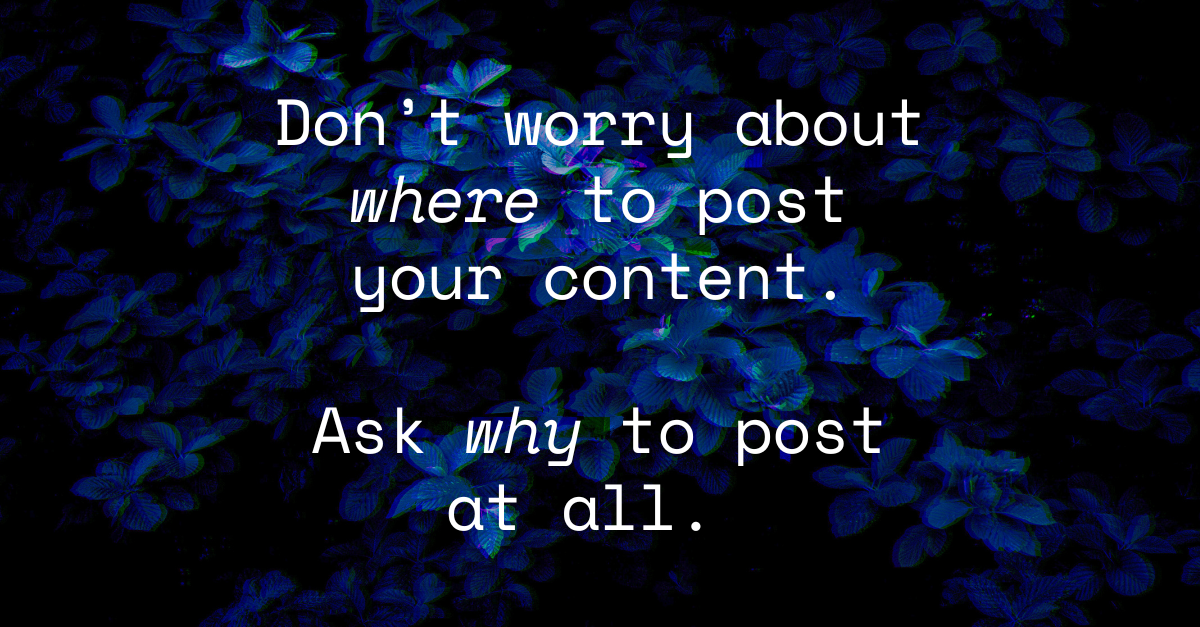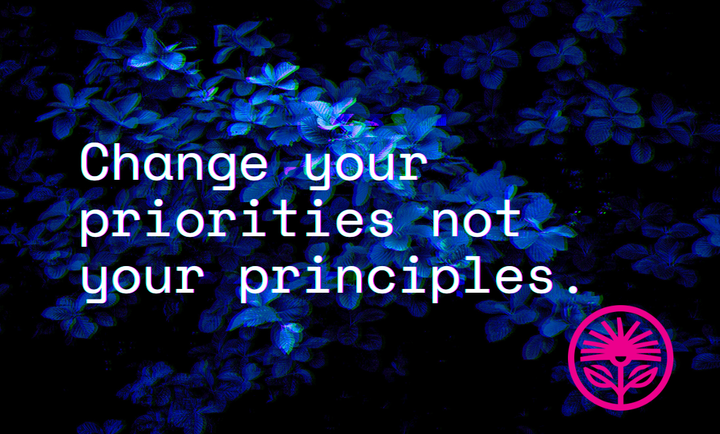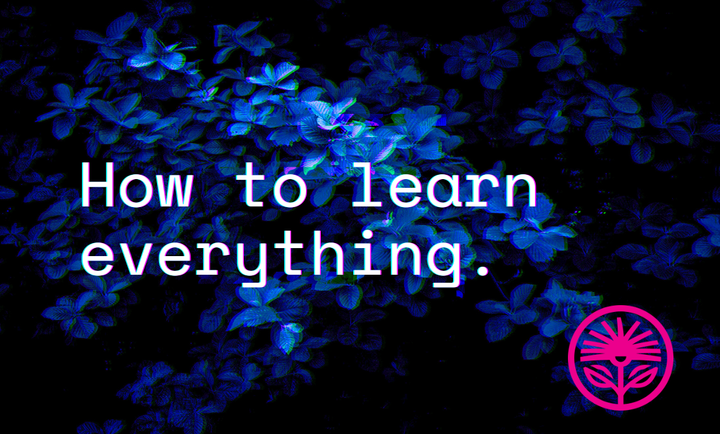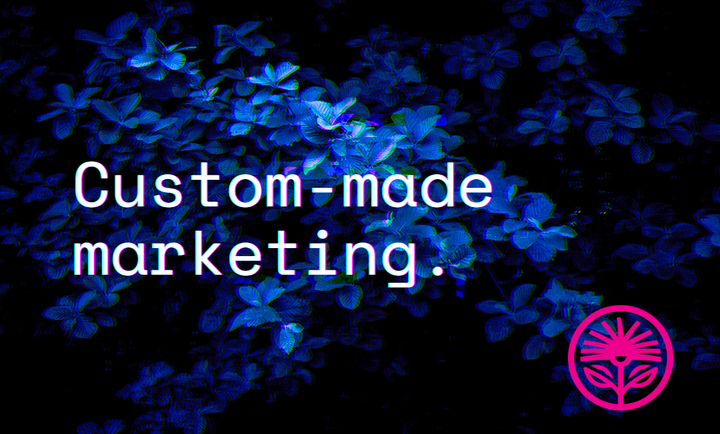Framework: Make content worth making
Make content magic.

Today, we’re going to put together a simple content strategy for your business.
But here’s the thing: You’re probably not going to like it.
You’re going to look at it and think, “But I don’t want to do that.”
Or maybe, “But I don’t like that.”
Probably, “What even is this?”
But, hopefully, and most importantly: “I don’t want that.”
Because this content strategy framework depends on you knowing what you want for your business, what you produce that’s uniquely valuable to someone in particular, and what you can do that no one else on this planet is capable of.
And who knows all that?
Not many. But, soon, you will.
And it starts by writing down what we know now, so we can figure out what we need to learn next.
This is my Valuable Content framework. I use it myself, and it’s how I’ve managed to write a daily newsletter for more than 50 issues now.
Not because it helped me figure out what I should do.
But because it helped me figure out what I wanted to do—that no one else can.
Now, let’s see what you can do.
Grab a notebook or a text document and write this down:
A: Strategy
1) I want:
2) I can:
3) I will:
B: Value
1) I create:
2) I deliver:
C: Content
1) My clients enjoy:
2) I’ll need to make:
3) I’ll never stop:
4) I’m the only one who can:
Got it written down? Now we’re going to go through the framework, using me and a hypothetical branding designer as our examples. Here we go:
A: Strategy
1) What do you want for your content? What’s under your power to achieve by way of creating content?
Examples:
Me: “I want to: build a following of entrepreneurs who want to understand their marketing so they can take control of it.”
Designer: “I want to: attract the attention of branding design clients far outside of my home region to expand my impact.”
You:
2) What’s the most efficient way content could help you make progress toward that? There are many things you might like to do or might want to be able to do, but what do you have the current capacity and capability for?
Examples:
Me: “I can: create content that motivates and inspires entrepreneurs to dig deeper into their marketing.”
Designer: “I can: create content that demonstrates my unique perspective and skillset that you can’t find anywhere else.”
You:
3) What structure would be required to keep you making those efficient actions, every single day, until you get what you want?
Examples:
Me: “I will: write something motivational and thought-provoking every single morning.”
Designer: “I will: spend 30 minutes every single day capturing and polishing my sketches for publication.”
You:
B: Value
1) What is your primary resource of value? At the end of the day, what do the people who work with you get? This should be clearly connected to what you want. There’s no point in providing value that doesn’t get you closer to what you want, and nobody wants something that you don’t find truly valuable.
Examples:
Me: “I create: ways of understanding marketing in real, human terms, so you know what to adjust and why.”
Designer: “I create: public personalities for companies that represent the values and purpose of their owners.”
You:
2) How do you most efficiently deliver that resource of value? What’s your Minimum Viable Impact?
Examples:
Me: “I deliver: questions that stir new ideas and new potential for your business.”
Designer: “I deliver: design concepts that you want to show everyone you know.”
You:
C: Content
1) What is the demonstrated demand? What type of content do your ideal clients already appreciate and enjoy?
Examples:
Me: “My clients enjoy: having new content and concepts they can chew on and/or share with their teams.”
Designer: “My clients enjoy: dreaming about what their business is truly capable of becoming.”
You:
2) What is the required supply? What’s the minimum volume or frequency of content you’d need to create to satisfy that demand? What’s enough content that people will have a chance to notice, engage, and interact—assuming they only see a tiny fraction of your total output?
Examples:
Me: “I’ll need to make: daily content that provides a single thing to think about.”
Designer: “I’ll need to make: a large content piece every month that you can revisit and get re-inspired by throughout the month.”
You:
3) What endless stock do you have access to? What can you do forever that other people seem to find tiring, boring, frustrating, or impossible?
Examples:
Me: “I’ll never stop: deconstructing mental models in my head and articulating new ways of using them.”
Designer: “I’ll never stop: sketching the ideas that pop into my head and bringing them into the real world.”
You:
4) What exclusive access do you have to a magical combination of elements that sets you apart from everyone else? What comes together in your mind, work, or experience that gives you an ability or interest unique to you alone? Think: what makes you boring to your friends, but extremely valuable to your clients?
Examples:
Me: “My magical combination is: synthesizing technology, history, business, and philosophy.”
Designer: “My magical combination is: loving the new and novel while obsessing over the form and function.”
You:
Valuable Content Strategy Statement:
Now, fill in the below statement using your answers from above:
I’ll demonstrate my ability to deliver (B2) by creating (C2) for people who want (C1).
I’ll dedicate my efforts to (C3) with a focus on (C4).
As long as I (A3), I’ll (A1).
Examples:
Me: I’ll demonstrate my ability to deliver (questions that stir new ideas and new potential for your business) by creating (daily content that provides a single thing to think about) for people who want (new content and concepts they can chew on and/or share with their teams).
I’ll dedicate my efforts to (deconstructing mental models in my head and articulating new ways of using them) with a focus on (synthesizing technology, history, business, and philosophy).
As long as I (write something motivational and thought-provoking every single morning), I’ll (build a following of entrepreneurs who want to understand their marketing so they can take control of it).
Designer: I’ll demonstrate my ability to deliver (public personalities for companies that represent the values and purpose of their owners) by creating (a large content piece every month that you can revisit and get re-inspired by throughout the month) for people who want (to dream about what their business is truly capable of becoming).
I’ll dedicate my efforts to (sketching the ideas that pop into my head and bringing them into the real world) with a focus on (loving the new and novel while obsessing over the form and function).
As long as I (spend 30 minutes every single day capturing and finessing my sketches for publication), I’ll (attract the attention of branding design clients far outside of my home region to expand my impact).
You’ll notice these strategies don’t say anything about the particular channel—like LinkedIn, YouTube, Reels, Mastodon, Bluesky, or anything else.
Because we need to stop worrying so much about where to post, and think a whole lot deeper on why to post at all.
The purpose of content isn’t shoving it out there and hoping for the best. That’s what everyone else is doing.
The purpose of content is to show off what you can do that nobody else ever could. Once you figure that out, then you figure out where to put it based on where your best customers already are.
At the end of the day, if your content doesn’t feel right, it isn’t right. Because you won’t stick to what you don’t like.
But if you like your content—if it inspires you first of all, it will inspire others.
If it teaches you, it will teach others.
If it leads you, it will lead others.
But if it bores you to make it, why would anyone else waste their time with it?
So, fill out the the Valuable Content framework, and then redo it, and then redo it. Again and again until what’s staring back at you isn’t just valuable content.
It’s magic.



